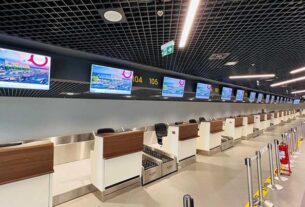EASA is in the process of coordinating the activities for initial trajectory information sharing (AF6) standardisation and readiness for implementation by the industrialisation date, 31 December 2023 as required by Regulation 2021/116. EASA fully recognises the benefits associated with the transition to Trajectory Based Operations (TBO), its contribution to the environment, and supports the need for effective implementation of initial trajectory information sharing. To support industry and operators, EASA has organised and will chair a forum to coordinate activities to pass industrialisation target date.
In February 2021, the European Commission published Regulation (EU) 2021/116 on the establishment of the Common Project One (CP1) supporting the implementation of the European Air Traffic Management Master Plan. Altogether, 6 ATM functionalities (AFs) requiring synchronised deployment have been defined. Five of these ATM functionalities were assessed as being ready for implementation. However, the Regulation prescribes an industrialisation target date of 31 December 2023 for the functionality, on initial trajectory information sharing (AF6). By that date, the European Commission, with the support of EASA, will verify if AF6 has been standardised and that it is ready for implementation.
Initial trajectory information sharing is the use of downlinked trajectory information by ground ATC and Network Manager systems. The use of trajectory data is intended to improve flight efficiency, permitting optimal aircraft trajectories, fewer tactical interventions, and improved de-confliction. This is a fundamental step towards full Trajectory Based Operations (TBO).
EASA fully recognises the benefits associated with the transition to Trajectory Based Operations, its contribution to the environment, and supports the need for effective implementation of initial trajectory information sharing.
Upon the request of the European Commission, EASA conducted an initial assessment by evaluating available documentation, with the assistance of external experts, in respect of the progress to achieve the industrialisation target date and its readiness for implementation. This initial assessment highlighted that there is a risk of not passing the industrialisation target date, due to the potential late availability of supporting industry standards, lack of sufficient evidence of the operational definition and expected benefits, as well as the needed connectivity improvements.
EASA considers that to address the AF6 industrialisation aspects all outstanding standardisation activities are to be completed and validated in the operational environment in a timely manner. To tackle other issues, prioritisation should be given to the identification and resolution of any potential connectivity constraints. This assessment also offers the opportunity to review the expected operational benefits of AF6.
EASA is fully committed to support industry and operators with effective implementation of initial trajectory information sharing. For this purpose and acting under the provisions of Regulation (EU) No 409/2013, and Article 4.5 of Regulation (EU) 2021/116, EASA has organised and will chair a Forum. This forum is to inform stakeholders about EASA’s initial assessment and to coordinate CP1 industrialisation, namely by agreeing the necessary actions that must be taken and the roadmap for their implementation in order to successfully pass the AF6 industrialisation target date.


